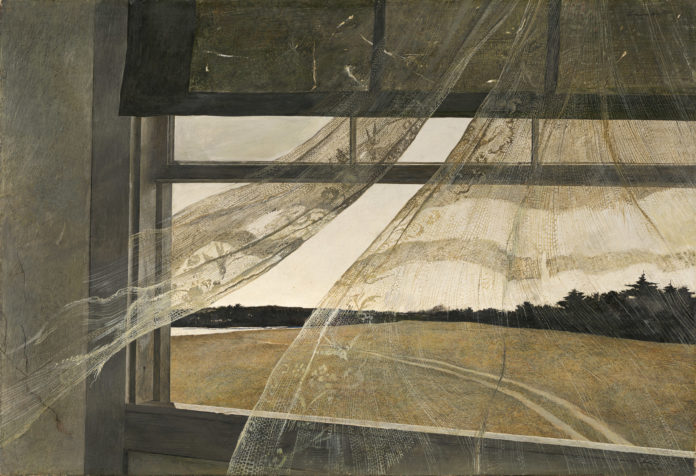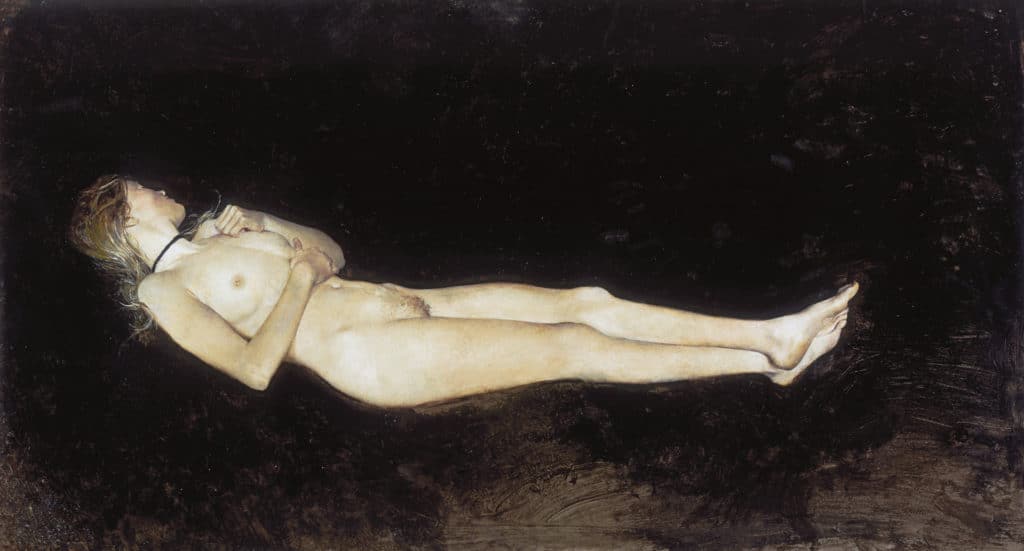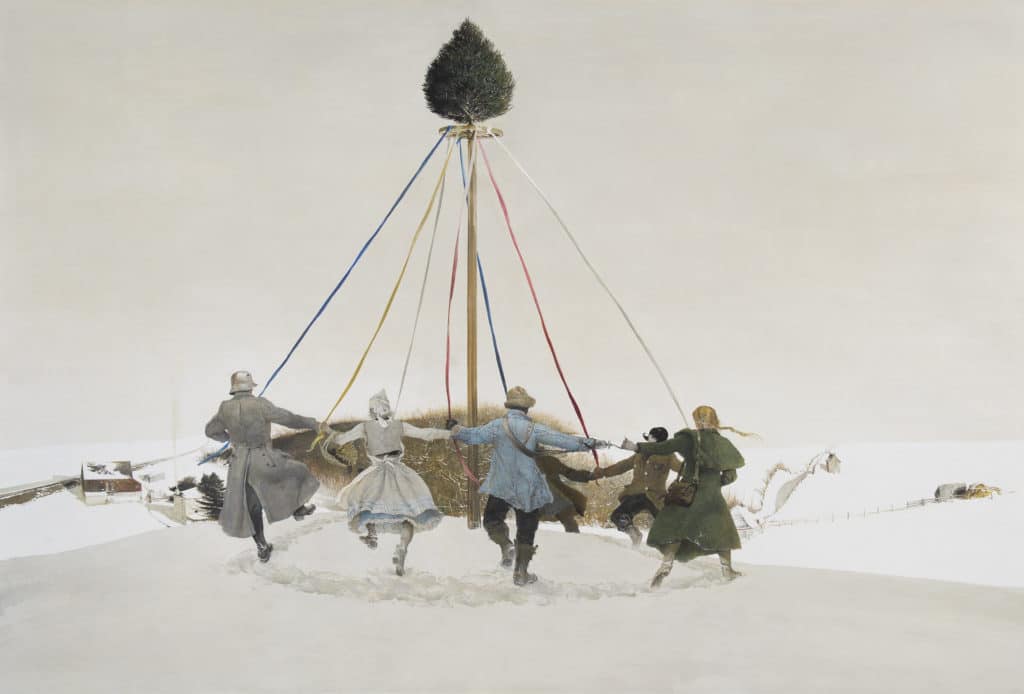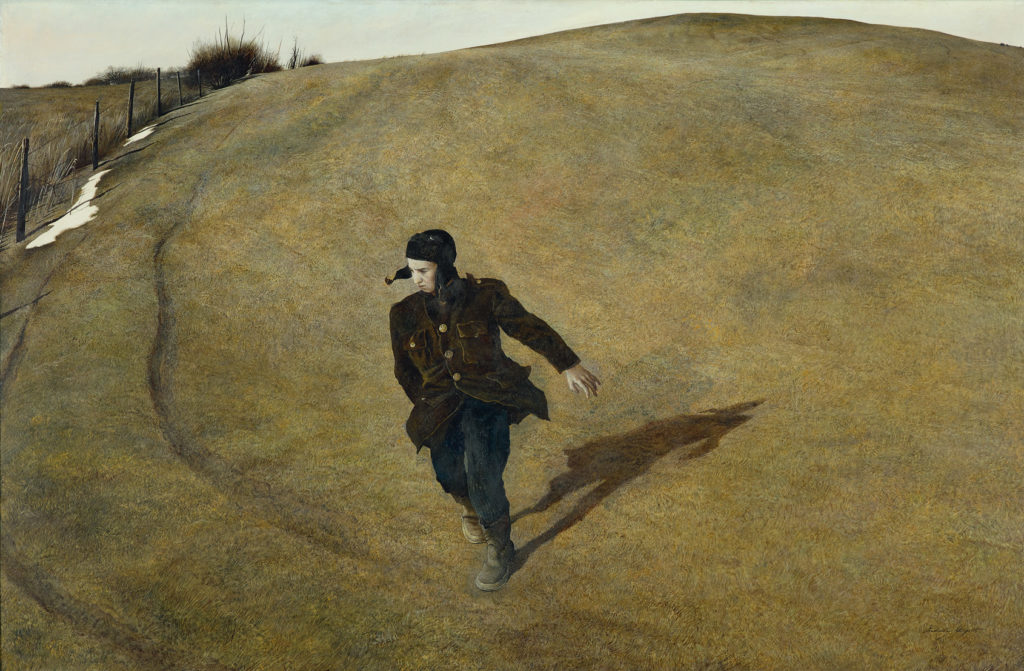
The Seattle Art Museum is soon presenting a radical reimagining of one of the 20th century’s most complicated — and celebrated — artists. More information here…
The renowned Andrew Wyeth is getting a fresh look from the Seattle Art Museum during “Andrew Wyeth: In Retrospect.” Opening October 19, the groundbreaking exhibition explores new perspectives on the art and legacy of the American painter’s 75-year career. Organized in conjunction with the Brandywine River Museum of Art for the 100th anniversary of the artist’s birth, the exhibition brings together 110 paintings and drawings ranging from the late 1930s to 2008, including rarely seen loans from the Wyeth family. According to the museum, ‘In Retrospect’ reflects on Wyeth’s work through the historical lens of a century in which he deviated from the American art mainstream but continued to figure prominently in much of the country’s artistic discourse.

“In Retrospect” opens with a gallery of significant works introducing the cast of characters from Wyeth’s world who feature in some of his most famous portraits, such as Christina Olson of Maine and Karl Kuerner, his neighbor in Chadds Ford, Pennsylvania. These dream-like works complicate long-held critical notions of Wyeth as an out-of-step realist, revealing how he imbued images of the places, people, and things around him with his own mysterious temperament.

“The work of Andrew Wyeth is technically dazzling, narratively riveting, and, well — weird,” says Patricia Junker, SAM’s Ann M. Barwick Curator of American Art. “His portraits, figures, and landscapes reveal a complex mind investigating the deepest human emotions: love, death, and how we experience the passing of time. We are thrilled to offer this rare opportunity to see such an impressive array of Wyeth’s work.”

The press materials report, “After the first gallery, the exhibition is organized in rough chronological order, tracing Wyeth’s development from his earliest watercolors, to more staged works of the 1940s-50s, and to deeper technical experimentation in the 1950s-60s, incorporating elements of chance. These include the artist’s little-known portraits of African Americans from the Chadds Ford community. The exhibition also offers a rare view into Wyeth’s artistic and technical process, presenting studies in a variety of media in an intimate tabletop display.

“A subsequent gallery presents the transitional moment in the late 1960s when Wyeth created portraits of two favored subjects, Christina Olson and Siri Erickson. Enigmatic, unsettling paintings of Wyeth’s neighbors Anna and Karl Kuerner investigate a marriage; poignantly, these are adjacent to Wyeth’s nude portraits of the Kuerners’ nurse Helga Testorf, created in secret at the same time and kept hidden for decades. Also from this era are complex, more abstract paintings that stand out against the rest of Wyeth’s oeuvre, including ‘Thin Ice’ (1969), an early work on loan from a private collection in Japan being shown for the first time on the West Coast.

“‘In Retrospect’ explores less-understood influences on Wyeth, such as popular film and images of war. On view are clips from ‘Metaphor’ (1975), a filmed conversation between director King Vidor and Wyeth, including scenes from Vidor’s silent masterpiece about World War I, ‘The Big Parade’ (1925), which Wyeth first saw as a child and re-watched hundreds of times. Also playing in the exhibition are clips from Ingmar Bergman’s ‘The Seventh Seal’ (1957), another film that deeply influenced Wyeth. While his contemporaries were expressing the modern age through abstraction, these clips reveal how Wyeth found his own way to a powerful symbolism through the experimental, modern art form of film.

“The exhibition closes with increasingly surreal late works and reflections on mortality, ending with Wyeth’s last painting, ‘Goodbye’ (2008), seen in this exhibition for the first time since it was briefly shown to those who attended the artist’s memorial service in 2009.”
“In Retrospect” will continue through January 15, 2018. To learn more, visit the Seattle Art Museum.
This article was featured in Fine Art Today, a weekly e-newsletter from Fine Art Connoisseur magazine. To start receiving Fine Art Today for free, click here.







